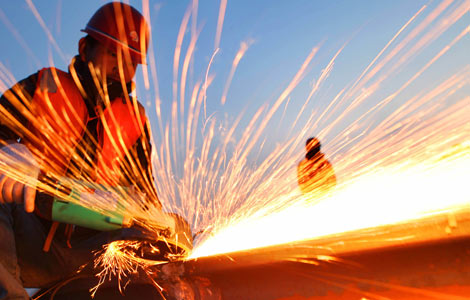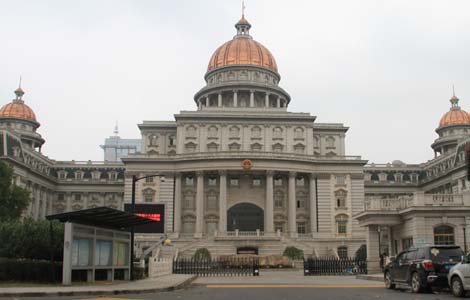
BEIJING - A senior Chinese astronomer on Friday revealed a timeline for China's planned program of space research.
In an interview with Xinhua, Zhang Shuangnan, an astrophysicist at the Institute of High Energy Physics of the Chinese Academy of Sciences, said key developments will include China launching its first space telescope around 2015 and the country's space station being completed around 2020.
Speaking at the sidelines of the 28th General Assembly of the International Astronomical Union, being held in Beijing from August 20-31, he said the space station will become a platform to study black holes, dark matter and dark energy.
With the accelerating pace of China's manned space program, time is on the side of the country's space astronomers (who conduct studies from spacecraft, as opposed to land-based astronomers), who are planning to put telescopes and other astronomical experiment in space, as a complement to large telescopes on Earth.
Under a national plan, China plans to launch the Hard X-ray Modulation Telescope (HXMT), the country's first astronomy satellite, around 2015. Already 20 years in development, it will observe black holes, neutron stars and other phenomena based on their X-ray and gamma ray emissions, according to Zhang, the HXMT project's leader.
The astronomer added that China plans to launch its Tiangong-2 space lab in 2014, aboard which there will be a Sino-Switzerland experiment, called "POLAR," a gamma ray burst detector.
The first such experiment on the international stage, it is part of China's Black Hole Probe Program to gain understanding of the physics of extreme conditions, Zhang explained.
Tiangong space labs have become a fundamental part of China's space station. Tiangong-1 was launched into space last September, and it docked with the Shenzhou-8 and -9 spacecraft in November 2011 and June 2012, respectively, paving the way for assembling a space station and ferrying supplies and equipment to the new facility.
The orbiting Tiangong-1 module was mainly used for testing docking procedures, without any astrophysical experiments on board. But space astronomers are seeking opportunities to assemble scientific payloads for the Tiangong-2 and -3 modules to be launched in the next three years.
They are designing astronomy experiments for the space station such as a Dark Matter Detection Program, designed to identify much-hypothesized matter that can't be seen directly with telescopes.
The installation and maintenance of space telescopes will need the assistance of astronauts, Zhang said, as has been required for the Hubble Space Telescope.
Astronomical experiments that have been approved to be part of the payloads of the space station include the Cosmic Lighthouse Program to study basic scientific questions such as the origin of the universe and stars, according to Zhang.
Also among the plans is the Portraits of Astrophysical Objects Program, intended to obtain pictures of extrasolar galaxies such as black holes, by using Very Long Baseline Interferometry (VLBI) - observations based on the use of multiple telescopes.
"It's a pity that as a country mastering space technologies, China has not launched any astronomy satellites yet," Zhang said, adding that its only astronomical experiment conducted in space was one testing gamma rays in the Shenzhou-2 spacecraft launched in 2001.
The astronomical satellites, as well as China's space astronomical plans, will offer large quantities of important data for astrophysical studies in a few years and elevate the country's scientific credentials to international frontiers, Zhang predicted.
According to a report of the Paris-headquartered Committee on Space Research, most orbiting or to-be-launched space observational facilities will terminate between 2018 and 2020, and there are few space astronomical projects being approved at present around the world.
This situation creates "both an opportunity and challenge for China's astronomical development," Zhang said.







